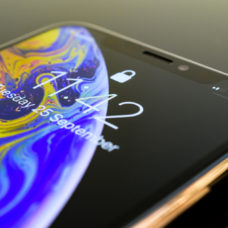Nokia, in an attempt to reclaim its synonymity with the cellular market, has once again teamed with its traditional partner and optic manufacturer, Zeiss.
Ten years ago, Nokia was a highly-regarded tech value in the world, producing up to one million mobile phones per day (four out of ten sales worldwide). This hegemony of Nokia’s that was founded in 1966–a convenient merging of three industries (paper, rubber and electrical cables).
Nokia and Zeiss aim to reclaim cellular glory.Click To TweetSpecialized in mobile phones since 1992, Nokia was, at one time, at the forefront of innovation and considered one of Europe’s flagship companies.
Nokia Makes a big Comeback
Nokia has had an eventful history. The company itself has survived two world wars and the Finnish civil war, as well as countless acquisitions.
After having been a major player during the mobile phones boom, the mythical manufacturer missed the mark with the advent of smartphones and connected devices. The company tried to cross the desert with Microsoft acquisition (for £4.61 billion) in 2014, before disappearing and being bought once again by HMD Global.

Now, Nokia seems to be in a rebirth phase.
After being dead, or at least a little forgotten, Nokia has made a big noise in 2017. Its Nokia 6 smartphone went out of stock in a single minute during an online flash sale in China. If no there’s no exact figure as to how many units were sold, nearly a million pre-bookings were registered.
Nokia also announces several other models, from entry to high-end, including the beloved Nokia 3310, which returned with modern contours, and the classic game Snake. HMD Global intends to invest $500 million USD in marketing Nokia’s devices, which will run Android OS.
Nokia-Zeiss: Back to a Winning Formula
Currently, the high-end smartphone market is saturated with models from different brands that tend to resemble one other, with a prerequisite set of features–something we feel Apple could be trying to break away from.
It’s difficult to compete toe to toe with the likes Apple and Samsung for anyone, let alone a defunct pre-smartphone legend. In order to differentiate its devices and stand out from the crowd, Nokia’s keyword is optics.
And this is not new for Nokia, who has capitalized on lense technologies for quite some time already. Its products, such as the Symbian-powered PureView 808, and Lumia range (under Microsoft), have always made the most of picture quality.
Last Thursday, HMD Global announced in a press release that it would be teaming up with Zeiss, the German specialist of imaging and optics, which has already worked on the N95. There are no specifications as to which models would integrate Zeiss’ optic sensors. In addition to optical hardware, Zeiss would also contribute to software development.
Nokia is aware that focusing on photo quality alone wouldn’t ensure the success of its devices. The company envisions the optics quality (hardware/software) as a selling point to target future customers of VR/AR enabled smartphones with scanning, mapping, recognition and object tracking capabilities.



















Comments (0)
Least Recent